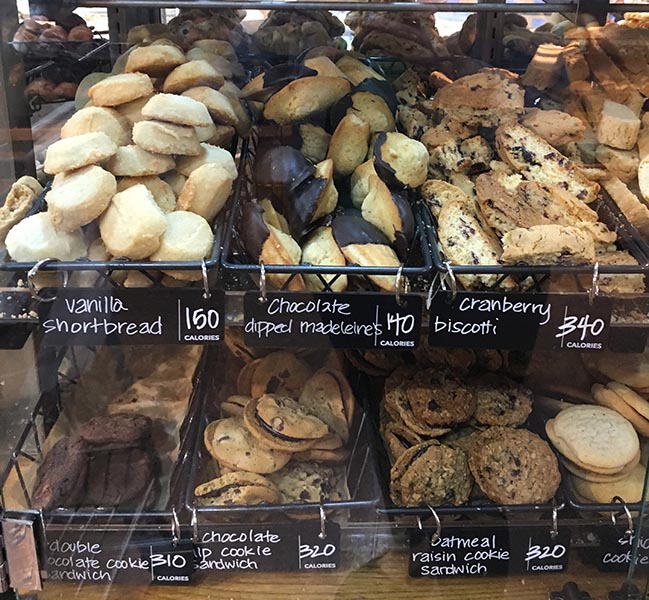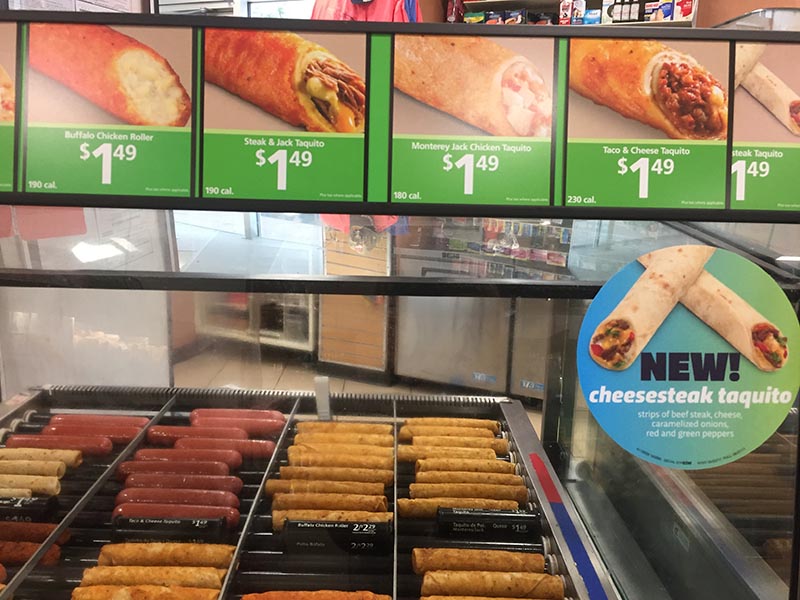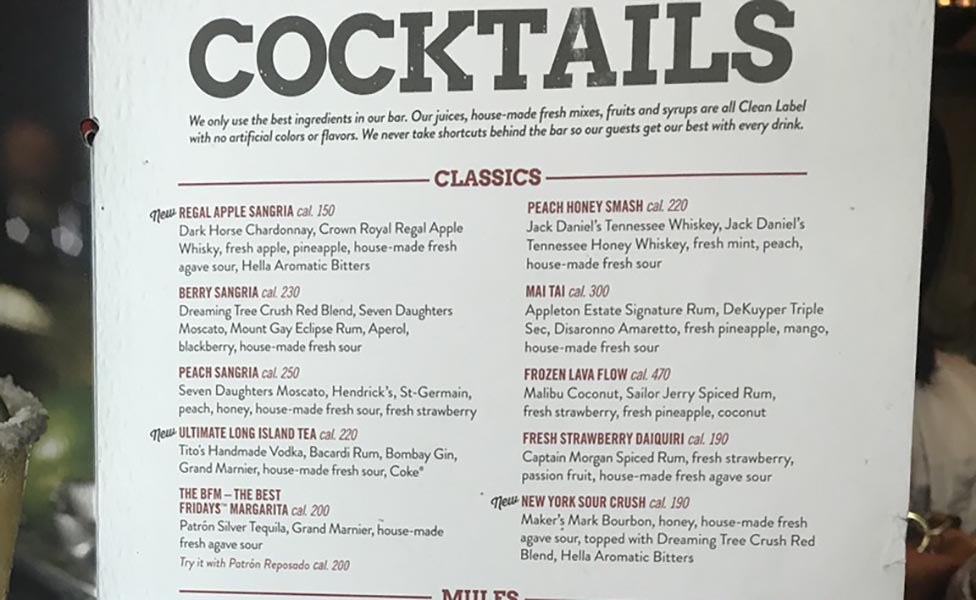Calories have (finally) arrived on restaurant menus

National menu labeling law goes into effect today
At The Cheesecake Factory, the Louisiana Chicken Pasta has twice the calories of the Four Cheese Pasta (2,330 vs. 1,190). But before today, not all customers would have known that.
That's because today is the deadline by which chain restaurants, convenience stores, and movie theaters across the country have to disclose the calories in every menu item, or in prepared foods at grocery stores. (The calorie-labeling law applies to all chains with at least 20 locations.)
Calories on menus matter. They don’t just tell diners what’s in their food. They also encourage chains to slim down their offerings.
And for Americans, eating out is no longer a rare treat saved for special occasions. We get—on average—about one-third of our calories from eating out. Without clear, easy-to-use nutrition information when you order, it’s difficult to make informed and healthy choices.
What to look for
Starting today, calories will be listed next to every item on menus and menu boards at restaurants, movie theaters, convenience stores, and supermarkets (for bakery items, salad bars, sandwiches, and other prepared foods).

You can use those numbers to swap lower-calorie dishes for higher-calorie ones. And you can also ask for information about sodium, saturated fat, and other nutrients. Chain restaurants have to make those other numbers available, though not necessarily on the menu.
How does a dish fit into a day's worth of food? Menus and menu boards must also put the calorie numbers into context, by posting a statement that “2,000 calories a day is used for general nutrition advice, but calorie needs vary.”
Tip: Check the calories for any side dish, sauce, or dressing options that are listed separately on the menu. Calories for pizza can be listed by the slice, along with the number of slices per pizza.
How menu labeling began
Getting here wasn’t easy. Almost 30 years ago, Congress was debating the Nutrition Labeling and Education Act, the law that requires Nutrition Facts on food labels. One sticking point: What to do about restaurants?
Some legislators wanted to require them to disclose calories and other nutrients. But the restaurant industry vehemently objected.
Lawmakers and outside supporters (like CSPI, publisher of Nutrition Action) feared that the whole bill might go down the drain, so they decided to deal with restaurants later.
It was a good trade-off. Nutrition Facts labels have helped millions of consumers become smarter shoppers.
But as time went by, restaurant meals—and waistlines—steadily grew. Cheeseburgers became double bacon cheeseburgers. Soft drinks morphed into quart-sized Big Gulps.
So, in 2003, CSPI—led by Margo Wootan, vice president for nutrition—started to push for a law requiring restaurants to post calories on menus.
At first, we focused on cities and states. Luckily, a public health champion—Michael Bloomberg—was the mayor of a city with an assertive and talent-rich health department. We worked with the department of health to make New York the first city to require calories on menus, in 2006.
We also helped local groups in Philadelphia, Seattle, California, and some 20 other cities and states win menu labeling policies.
Different rules in different jurisdictions was promising to be a huge headache for chains. Eventually, the restaurant industry came to the table. In 2010, it agreed to support a national bill, which passed that same year. But movie theaters, pizza chains, and the alcohol industry wanted exemptions. So did convenience stores and supermarkets.
For eight years, CSPI successfully fought them off.
Go to menulabeling.org for more details about calorie labeling on restaurant menus.

